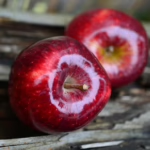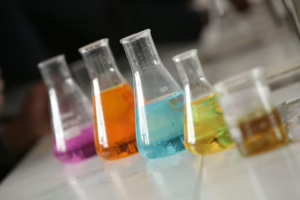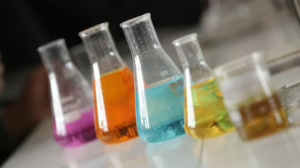Exploring the World of Polymers: Insights for Class 12 Chemistry Students
Introduction to Polymers
Polymers play an integral role in our everyday lives, forming the foundation for countless materials and substances we depend on. From the plastics we use daily to the biological macromolecules essential for life, understanding polymers is crucial for students, particularly those in their final years of high school. This article aims to provide an extensive overview of polymers, tailored for Class 12 chemistry students, while incorporating insights, examples, and applications to foster a deeper understanding of this fascinating field.
What Are Polymers?
Definition
Polymers are large molecules composed of repeating structural units called monomers, which are covalently bonded together. The term “polymer” derives from the Greek words “polus,” meaning many, and “meros,” meaning parts. Polymers can be divided into two main categories: natural polymers, such as proteins and cellulose, and synthetic polymers, like polyethylene and nylon.
Structure of Polymers
The structure of polymers can affect their properties significantly. Depending on how the monomers are arranged, polymers can be categorized into:
-
Homopolymers: Composed of a single type of monomer. For example, polyethylene is made solely from ethylene monomers.
-
Copolymers: Composed of two or more different monomers. An example is styrene-butadiene rubber, which combines styrene and butadiene.
Polymers can also be linear, branched, or cross-linked, affecting their physical properties:
- Linear polymers have a simple, chain-like structure.
- Branched polymers have side chains attached to the main chain.
- Cross-linked polymers have bonds between different polymer chains, creating a network structure.
Polymers in Daily Life
Everywhere we turn, polymers are an essential part of our daily experiences. Common examples include:
- Plastics: Used in packaging, containers, and household goods.
- Textiles: Clothes made of polyester or nylon.
- Rubber: Found in tires and various household items.
Classification of Polymers
Polymers can be classified in various ways, with each category highlighting different properties and uses.
Based on Origin
-
Natural Polymers: These are found in nature and include proteins, nucleic acids, and polysaccharides. They are vital for biological functions.
-
Synthetic Polymers: Manufactured through chemical processes. Examples include plastics, acrylics, and synthetic rubber.
Based on Structure
-
Addition Polymers: Formed through the polymerization of unsaturated monomers. An example is polyvinyl chloride (PVC).
-
Condensation Polymers: Formed by eliminating small molecules, such as water, during polymerization. An example is nylon.
Based on Physical State
-
Thermoplastics: Soften when heated and harden upon cooling, making them moldable. Examples include polystyrene and polyethylene.
-
Thermosetting Plastics: Harden permanently after being heated. Examples include bakelite and epoxy resins.
Based on Molecular Forces
-
Elastomers: Have elastic properties and can return to their original shape after deformation. Natural rubber is a common example.
-
Fibers: Have high tensile strength, making them suitable for textiles. Examples include cotton and nylon.
-
Films: Thin layers used for various packaging purposes, such as polyethylene film.
Polymerization Processes
Understanding the mechanisms of polymerization is essential for Class 12 students. The primary methods of polymerization are:
Addition Polymerization
In addition polymerization, monomers with unsaturated bonds (like double bonds) react to form polymers without the loss of any small molecules. The process can be initiated through heat, light, or chemical catalysts.
-
Free Radical Polymerization: Initiated by free radicals, which are atoms or molecules with unpaired electrons. This method is commonly used for producing plastics like polyethylene.
-
Ionic Polymerization: Utilizes an ionic initiator (either positive or negative ions) to start the polymerization process. This is generally used for polymers needing higher precision.
Condensation Polymerization
Condensation polymerization involves the reaction between monomers that contain functional groups, leading to the expulsion of small molecules, such as water or alcohol.
- Example: The formation of nylon from hexamethylenediamine and adipic acid results in the release of water as a byproduct.
Properties of Polymers
The properties of polymers depend on their material structure, molecular weight, and the type of polymerization process involved. Important properties include:
Mechanical Properties
-
Tensile Strength: The resistance of a polymer to being pulled apart.
-
Elasticity: The ability of a polymer to return to its original shape after deformation.
-
Impact Resistance: The ability to withstand sudden forces without breaking.
Thermal Properties
-
Glass Transition Temperature (Tg): The temperature at which a polymer transitions from a hard, glassy material to a soft, rubbery state.
-
Melting Temperature (Tm): The temperature at which crystalline regions of a polymer melt.
Chemical Resistance
Polymers exhibit varying degrees of resistance to chemicals, which makes some suitable for use in harsh environments. For instance, Teflon (PTFE) is highly resistant to chemical attacks.
Optical Properties
Many polymers are transparent, making them suitable for applications such as lenses and packaging films. Others may be opaque or colored for aesthetic or functional purposes.
Applications of Polymers
Polymers serve as fundamental materials across most industries, emphasizing their versatility and importance.
Packaging Industry
Polymers revolutionize the packaging industry by providing lightweight, durable, and versatile options:
-
Plastic Films: Used for wrapping food items and extending shelf life.
-
Containers: Such as bottles, jars, and boxes manufactured from various plastics.
Automotive Industry
Polymers enhance vehicle performance and safety. Common applications include:
-
Interior Components: Dashboard covers, seat fabrics, and insulation materials.
-
External Parts: Bumpers and body panels made of lightweight materials to improve fuel efficiency.
Medical Field
Polymers are increasingly important in medical technology. Applications include:
-
Biocompatible Materials: Used in implants, drug delivery systems, and sutures.
-
Diagnostic Equipment: Polymer-based components in lab tests and analysis tools.
Electronics
In electronics, polymers are critical due to their insulating properties. Many electronic devices incorporate polymers in:
-
Wire Insulation: Preventing short circuits and protecting signal integrity.
-
Casings: Providing protection and enhancing design aesthetics.
Construction
Polymers contribute to the construction industry through the use of additives:
-
Concrete: Polymer additives improve durability and workability.
-
Insulation: Polyurethane foam offers excellent thermal resistance.
Environmental Impact of Polymers
While polymers offer numerous advantages, they also pose environmental challenges:
Plastic Pollution
The rise in disposable plastic products has resulted in significant environmental concerns, including:
-
Ocean Pollution: Millions of tons of plastic waste end up in oceans, harming marine life.
-
Landfill Overflow: Plastics take hundreds of years to decompose, filling landfills and contributing to environmental degradation.
Biodegradable Polymers
To combat environmental issues, scientists are developing biodegradable and compostable polymers derived from renewable resources. Examples include polylactic acid (PLA), made from corn starch, which breaks down into harmless byproducts.
Recycling
Recycling plays a vital role in minimizing plastic waste. Many polymers can be recycled, although the rate of recycling varies depending on local policies and infrastructure.
Future of Polymers
The future of polymers is promising, with ongoing research and innovation in various fields:
Smart Polymers
Smart polymers can respond to environmental changes, like temperature and pH, showing potential for applications in drug delivery and responsive materials.
Nanotechnology
Nanotechnology involves manipulating materials at the molecular level, opening new possibilities for creating advanced polymers with improved properties, such as strength and lightweight characteristics.
Sustainable Polymers
The focus on sustainability will continue to drive research into biodegradable plastics and the utilization of bio-based feedstocks for polymer production, further reducing the reliance on fossil fuels.
Conclusion
Polymers are a cornerstone of modern materials science and hold crucial relevance for students studying chemistry. From their diverse structures and properties to their vast applications across industries, understanding polymers provides insights into the science of materials that shape our world. As we look to the future, the ongoing innovation and development in the field of polymers promise exciting advancements that will continue to impact our lives significantly.
References
- P. J. Flory, “Principles of Polymer Chemistry,” Cornell University Press, 1953.
- E. W. Fischer, “Polymers in Solution,” Springer-Verlag, 1994.
- M. A. Winnik, “Polymer Physics,” Westview Press, 1994.
- C. A. Harper, “Plastics Engineering,” McGraw-Hill, 1999.
- P. J. F. Harris and T. R. W. K. Tullis, “Polymers: Chemistry and Physics of Modern Materials,” Chapman and Hall, 1996.
By providing a comprehensive exploration of polymers, students in Class 12 will be well-equipped to appreciate the intricacies of these materials and their significance in both everyday life and advanced scientific applications. Understanding the intersection of chemistry, biology, and environmental science within the world of polymers will foster informed future scientists dedicated to innovation and sustainability.
























Add Comment